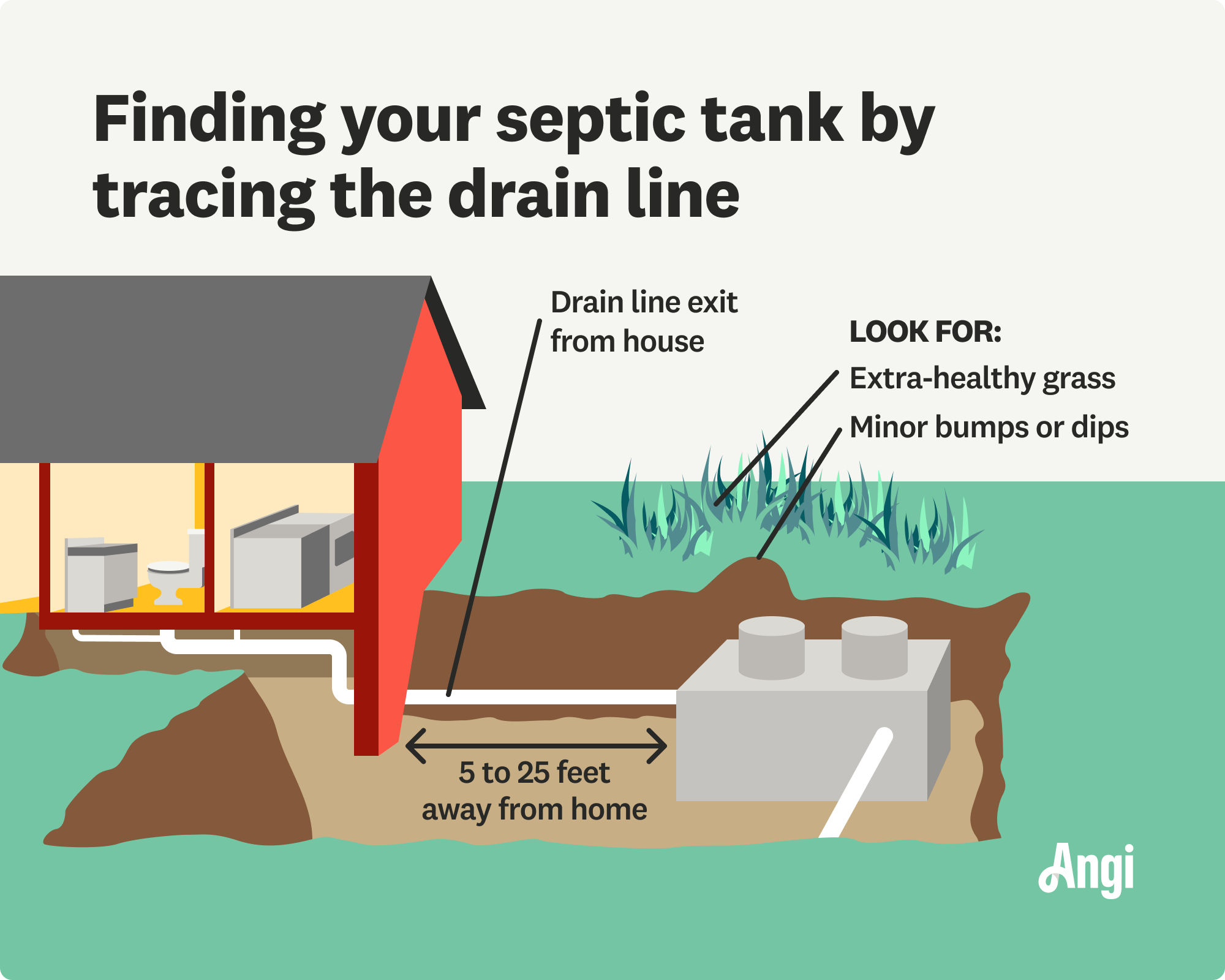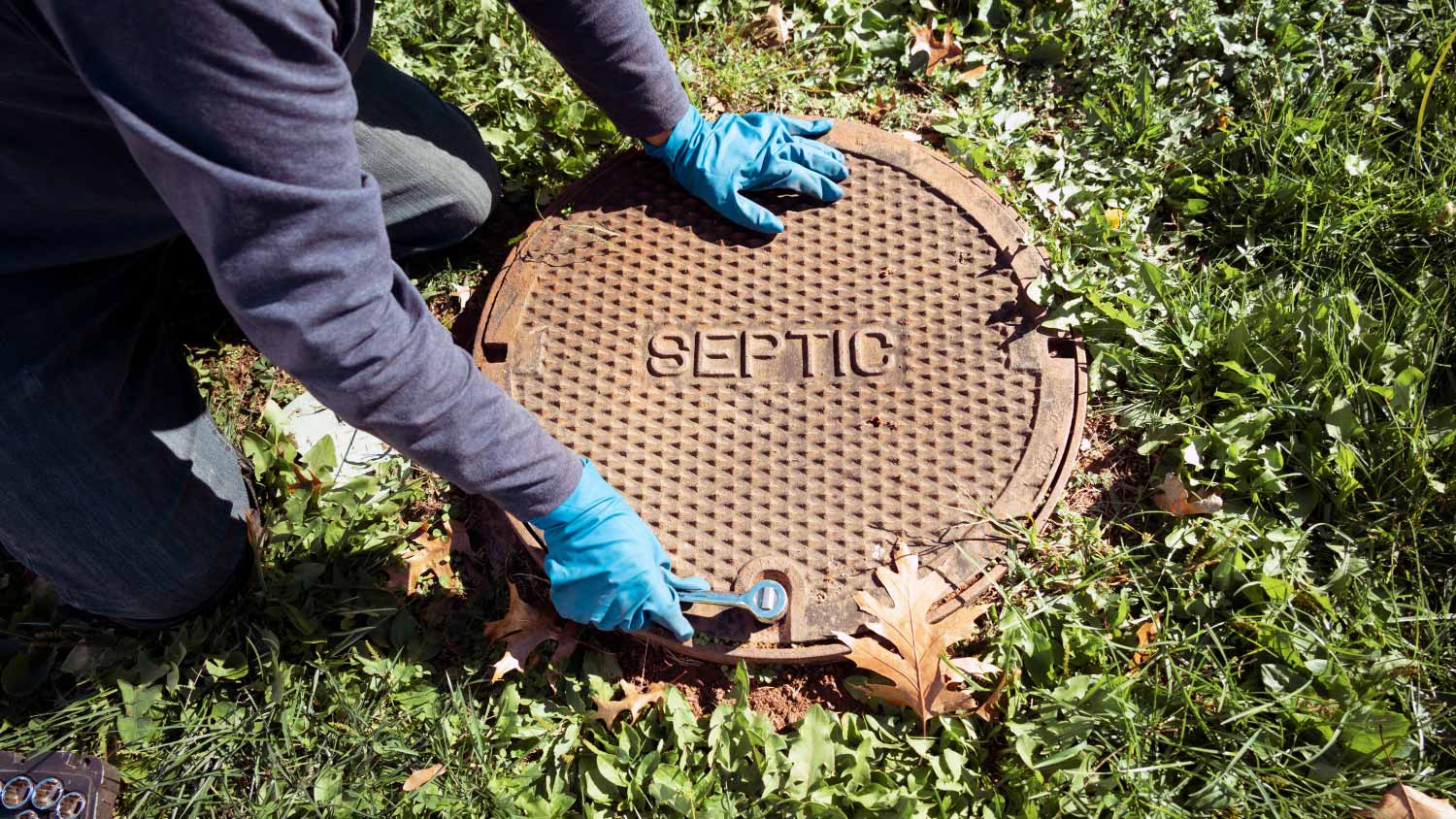
The average cost to connect to a public sewer line in Columbus, OH, depends on the linear footage, piping material, local regulations, and more.
Tap into your senses to check for signs of a full septic tank


When you’re washing your hands, running the dishwasher after dinner, or taking a long shower, you’re probably not spending much time thinking about the septic tank buried in the backyard. But your septic system is an important part of your household, even if you can’t see it working. When the septic tank gets too full, whether from rainwater, wastewater, or solid waste, it can create some serious, and smelly, problems for your home and yard. Here’s how to check when the septic tank is full and what to do if it is.
First things first: What is a septic tank? A septic tank holds wastewater from your home and separates solid waste and liquid wastewater. While the septic tank directs filtered wastewater to the leach field for further treatment and dispersal into the soil, the solid waste, or sludge, can build up in the bottom of the tank.
According to the U.S. Environmental Protection Agency, the sludge and scum layer should take up no more than 25% of the septic tank. You have to check your septic tank and have it pumped regularly, at least every three to five years but typically about one to three years. Otherwise, the sludge and scum buildup can cause the system to overflow, which means wastewater could back up into your home’s plumbing or flood your yard.
Pumping a septic tank costs $550 on average, and this is usually done about every three to five years. This is one maintenance task you don’t want to put off because if the system falls into disrepair, you could spend about $3,500 to $11,700 on the cost to install a new septic system.

While you won’t actually be opening up the septic tank to check the sludge levels yourself, it’s still helpful to know where your septic tank is located on your property. You may need to check this area for signs of an overflowing septic tank.
If you’re not sure where the septic tank is, first look for a hill or depression around your yard. However, it’s not always easy to spot the septic tank, especially if you or the previous homeowner used septic tank landscaping to disguise the tank. The fastest way to find the septic tank, if you’re not sure, is to hire a septic tank maintenance company to identify it for you.

A professional needs to open the septic tank cap to check the levels and pump if needed, because septic tanks can release gasses like hydrogen sulfide, methane, and carbon dioxide that can be toxic and even fatal to humans in high concentrations. Hydrogen sulfide and methane can also increase the risk of fire or explosion.
Not only that, but if the septic tank is so full it is overflowing, you could come into contact with raw sewage, which contains bacteria and viruses that can cause illnesses such as gastroenteritis, typhoid fever, or campylobacteriosis. These diseases come with symptoms such as vomiting, diarrhea, abdominal pain, headaches, fever, and other unpleasant side effects.
Rather than opening up the septic tank and peeking inside—a job best left to professionals—you can inspect the areas around your home and yard for signs of a full septic tank.
A gurgling sound in your toilet, drains, or pipes may be a sign of a full septic tank or a clog in the pipes. The gurgling happens when water tries to flow through the pipes, but a buildup of sludge in the septic tank or a clog somewhere in the pipes causes air to become trapped. The trapped air bubbles create a gurgling sound as they work their way through the pipes.
When the septic tank is full or clogged with sludge, it can release smelly gasses through the pipes and into your home or in your yard. You might notice a smell of sewage or something similar to rotten eggs. Sure, it’s a little gross to go around smelling for sewage, but it could help identify a full septic tank before it damages your entire septic system.
In addition to gurgling sounds, you may notice your drains are draining water much slower than usual. A slow drain may just be a symptom of debris buildup in the drain or pipes, but it can also be a sign that there is too much sewage in the septic tank. If you clear out all debris, like hair and soap scum, in the drain and it still drains slowly, you likely have a septic problem.
When the septic tank overflows, the water may pool up into the yard, creating smelly puddles above or around where the septic tank is buried. If the wastewater is flooding your yard, you’ll need a septic tank service pro to come fix the issue as quickly as possible to avoid attracting pests or contaminating the environment with any untreated wastewater.
One clear indicator of an overflowing septic tank is sewage backup. You may smell it before you see it, but if not, you may notice wastewater traveling back up into the drains, usually in tub and shower drains or basement drains. Because this wastewater can contain bacteria and viruses that may make you sick, it’s important to hire a local septic tank cleaner right away to address sewage backing up into your drains.
Wouldn’t it be wonderful if you could just wake up to a fuller, greener lawn? While truly boosting lawn health takes some time and effort, a full septic tank can have one strange impact on your lawn: making it thicker and more vibrant. Although you might appreciate the lush grass that has sprung up seemingly overnight on the ground above or around the septic tank, this is usually a sign that the septic tank is too full.
Some bugs, especially certain types of flies, will swarm your drain field or septic tank lid if it's full. These insects are attracted to sewage because they often lay eggs in it. So, if you see a lot more bugs than usual in a particular spot in your yard, it’s time to call a septic pro.
An overflowing septic tank isn’t just smelly and gross; it can also be a health and environmental risk. Fortunately, keeping up with septic tank maintenance will keep the system running properly. A well-maintained septic system can last 20 to 40 years with no problems.
If your septic tank seems to fill up quickly, you may want to look into ways to minimize your household wastewater. Take shorter showers, and run appliances like the dishwasher or washing machine less frequently. You can also install water-efficient fixtures, often called low-flow fixtures, around the house.
To keep excess water from flowing into the septic tank or leach field, make sure you set up downspouts to direct water away from the house and from the septic system. If your area gets a lot of rain, you may also need to dig trenches to let rainwater flow away from the septic tank.
Pumping your septic tank every three to five years is one of the most important septic maintenance tasks. When you combine that with flushing only approved items (toilet paper and waste) and avoiding driving over your drain field, you have a recipe for a long-lasting septic system.
The most important way to prevent an overflowing septic tank is to schedule regular septic tank pumping. Hire a local septic tank cleaner once every few years to remove the sludge and dispose of it properly.
From average costs to expert advice, get all the answers you need to get your job done.

The average cost to connect to a public sewer line in Columbus, OH, depends on the linear footage, piping material, local regulations, and more.

Roto-Rooter plumbing services can help you unclog drains, fix leaks, or provide remediation services after a flood. Learn the average cost to hire a local specialist and how they can help you.

Sewer cleanout costs depend on the type of cleanout and how long the line will be. Click here to start planning your budget for this project.

A perc test for septic analyzes the absorption rate of the soil where a tank is going to be installed. Learn more about the test, cost, and passing grades.

What are the differences between cesspool aeration vs. pumping, and when might you need one over the other? Learn more in this comprehensive guide.

Your lot might require an alternative septic system based on location and soil conditions. Learn all about alternative septic systems and their costs.